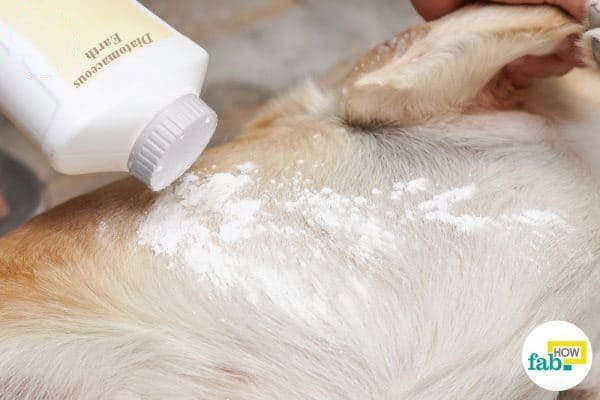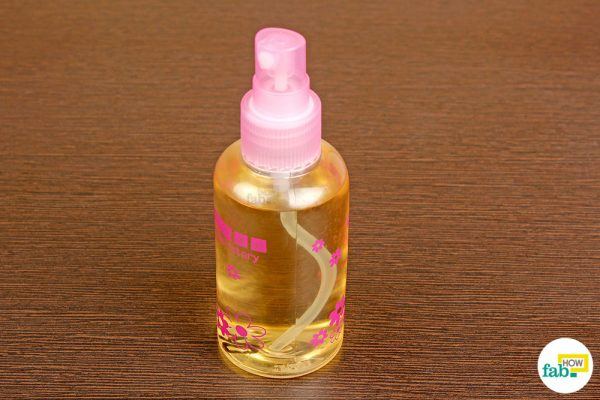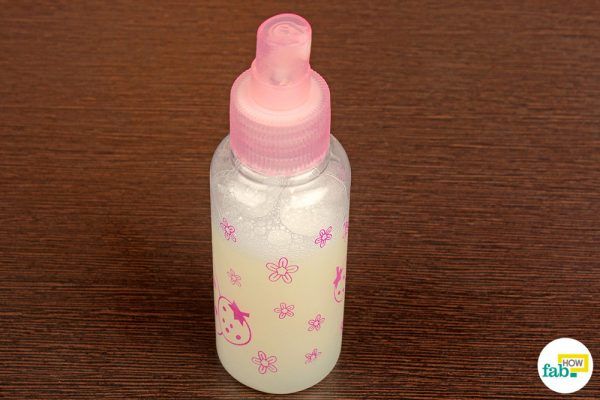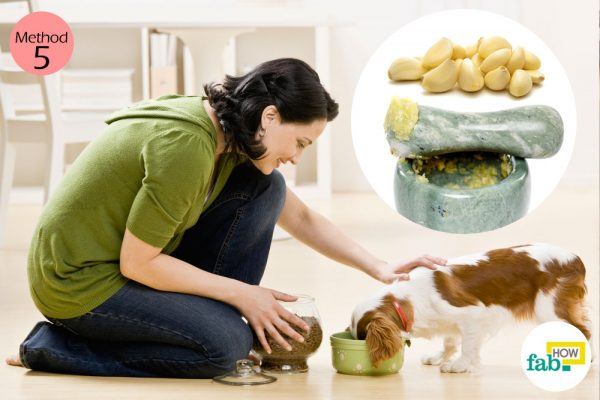How to Get Rid of Fleas on Dogs Home Remedy
A flea infestation is every pet owner's nightmare. Watching your pet pooch suffer from fleas can be quite agonizing. Merciless and incessant, fleas are rampant, especially in warmer weather. Effective flea-repellent measures become essential in such situations.
Fleas are small, dark brown insects that thrive on the blood and warmth of your dog. Your dog can pick up fleas from other animals or from the environment. While fleas can't fly, they can jump about 100 times their height. This allows them to get to your pet easily.
An adult female can lay 20 eggs daily in its life span of 2 to 3 months. These eggs drop off the host (dog) and remain where they land until they hatch, at which point they'll find hosts for themselves. This is how a flea infestation can rapidly escalate if ignored. Look for signs of flea infestation in your dog like excessive scratching and biting a certain body part.

Fleas thrive when the temperatures soar above 65 degrees. Winter provides a break from fleas for some dogs. But pet owners in areas where the temperatures stay around or above 65 degrees year-round face the flea threat the entire year.
Most medicated pet shampoos and commercial flea poisons come with their own side effects. If you want a natural solution to a flea infestation in your house, some home remedies that can be truly effective to get rid of fleas on dogs fast. Many of these remedies are cost efficient and come with the ease of availability.
Fleas will spend about 90% of its life cycle either as eggs, larvae, or as an immature or adult flea off of your pet. That is one of the reasons fleas can be difficult to remove from the environment. Cleaning your pets bedding frequently as well as vacuuming the house can help keep the infestations in check.
Contents
- Natural Treatments to Get Rid of Fleas on Dogs
- Method 1: Using Apple Cider Vinegar (ACV)
- Combine water and ACV in a spray bottle
- Method 2: Using Liquid Dish Soap
- Combine dish soap, lemon juice and water
- Method 3: Using Food-Grade Diatomaceous Earth
- Method 4: Using Essential Oils
- Combine essential oils and water in a spray bottle
- Method 5: Using Garlic
- Method 1: Using Apple Cider Vinegar (ACV)
- Tips to keep in mind
Natural Treatments to Get Rid of Fleas on Dogs
You may need help from your veterinarian to eliminate fleas but it is possible to handle fleas with natural remedies in some cases.
Method 1: Using Apple Cider Vinegar (ACV)
Apple cider vinegar (ACV) can be quite unpleasant to taste and smell. Fortunately, you can use this to your advantage when dealing with fleas on your dog. Dog fleas are repelled by the taste and smell of ACV. The ACV creates an unfriendly environment that the fleas will avoid. ACV should never be used on your cats though.
This doesn't mean that your pet needs to smell like a quart of ACV. Diluting ACV and using it as a spray will give you the desired results.
Things you'll need:

- Apple cider vinegar (ACV)
- Water
- Spray bottle
Combine water and ACV in a spray bottle

- Add a little water to a small spray bottle.
- Pour in an equal amount of ACV.
- Close the bottle and give it a shake to mix the contents.
Spray the diluted ACV on your dog's entire coat. If your dog doesn't have fur, you can also massage his or her skin with the solution. For those with long fur, make sure that the ACV gets through to the skin for full effect.
Repeat this process twice a week to effectively deter the fleas.

Method 2: Using Liquid Dish Soap
Basic liquid dish soap can help you combat a bad flea infestation on your pet. Any mild and fragrance-free dish soap can be used for this job.
Dish soap works in two ways to kill the fleas. Firstly, it breaks the surface tension of the water, which makes the fleas sink instead of floating. Secondly, the dish soap counters the waxy cuticle of these insects that helps them repel water. This allows them to absorb water and drown effectively.
Adding lemon juice to this remedy makes it more potent. Lemon contains a limonene that kills and repels fleas.
Things you'll need:

- Liquid dish soap – 1 tablespoon
- Lemon juice, freshly squeezed – 1 tablespoon
- Water – 1 tablespoon
- Spray bottle
Combine dish soap, lemon juice and water

- Put 1 tablespoon each of water, lemon juice and liquid dish soap into a small spray bottle.
- Close the spray bottle and shake it to mix the contents well.
- Spray the solution thoroughly over the entire coat of your dog. Make sure to get to the skin of dogs with long fur. Keep it away from your dog's eyes.
- Let the solution sit for 30 minutes before giving your pet a thorough bath to rinse off the dish soap.
Repeat this remedy weekly to get rid of fleas on your dog.

Method 3: Using Food-Grade Diatomaceous Earth
Diatomaceous earth (DE) is a soft, sedimentary rock that's essentially fossilized marine algae. It is usually available in powdered form and can be used to effectively get rid of fleas on your pets and from your house. It is a safe and cost-efficient way to keep your pooch free of fleas.
When viewed under a microscope, DE particles resemble the jagged ends of broken glass. They make lacerations in the exoskeletons of the fleas, which dehydrates and kills them. The eggs also get destroyed similarly. The fleas also end up ingesting the DE in an effort to clean it from their antennae and bodies, and it eventually chokes them.
Only food-grade DE should be used to treat your pet for fleas. The DE used in swimming pools or gardens often contains additives that are not good for your dog.
If you're skeptical, the DE will not have any adverse effects on you or your pet. This substance is lethal in its microscopic structure, but only toward the exoskeletons of the insects. It is simply soft dust to you and your pet. All you need to do is dust them with DE.

- Wear gloves to prevent the fleas from coming in contact with your skin. This will also prevent the DE from drying out your skin.
- Liberally dust your gloved hands with food-grade DE and pat down the fur/coat of your dog. If your dog has long fur, ensure that the DE reaches all the way to the skin instead of just remaining on the surface.
- Treat the armpits, belly, groin, ears, head and the area around the tail liberally with DE. These are the spots where fleas are normally concentrated.
- DE should not be inhaled, either by you or your pet. While applying, keep the dust of DE away from the nose of your pet and that of yourself.
- Treat your dog's bedding and favorite lounging spots with the DE. Vacuum the bedding and the rugs after 12 hours of application to remove the dead fleas.
Repeat every 3 days to kill the newly hatched eggs and break the reproduction cycle. Continuing with this process for 30 days will rid your pooch and your house of the flea infestation.
It is important to remember that the skin must be kept dry as moisture can negate the treatment with DE.
Method 4: Using Essential Oils
Essential oils can also be used to deter fleas. This is a fragrant and pleasant way to keep your dog free of these troublesome pests. The potent odor of essential oils is effective in driving away a host of bugs, including fleas.
Using a blend of one or more essential oils is usually best. While any essential oil can be used as a flea deterrent on dogs, essential oils with insecticidal properties are more effective. Eucalyptus, peppermint, cedar wood, citronella, lavender, thyme, basil, tea tree, clove or lemongrass are some of the essential oils you can use.
Dogs have a much heightened sense of smell. You can try different essential oils and their combinations and go with the one that your pet favors. You can use these essential oils on your dog's collar or use them as an anti-flea spray. But, you should always dilute essential oils before using them on your pet.
Things you'll need:

- Lemongrass essential oil – 2 or 3 drops
- Lavender essential oil – 2 or 3 drops
- Water – 1 tablespoon
- Small spray bottle
Combine essential oils and water in a spray bottle

- Pour 1 tablespoon of water into a small spray bottle.
- Add 2 or 3 drops of lemongrass essential oil.
- Add 2 or 3 drops of lavender essential oil as well.
- Close the bottle and shake vigorously to mix the contents.
Spray the essential oil solution all over the coat of your dog. If your dog has long fur, make sure that you get to the depth of the fur. You can also spray your dog's bedding and chief lounging spot to deter the fleas in these areas.
Essential oils should not be used on cats and be used very carefully on dogs.
Repeat this process once a week to maintain the flea barrier.

Method 5: Using Garlic
The health benefits of garlic for humans are many, but it is often seen on the list of foods lethal to dogs. This makes many pet owners keep their dogs away from garlic. However, if used with caution, garlic can be safely used to get rid of fleas.
Anecdotal evidence suggests garlic, if fed the right way, doesn't harm canines, but there are no definitive studies supporting that. One of the most important things to consider before introducing garlic into your dog's diet is that you should use only fresh, raw and organic garlic. Feed your dog garlic only if it's from a bonafide organic source. Keep away from processed or minced garlic.
The second most important thing is to observe caution with the dosage. If fed in large quantities, garlic can of course be harmful to your dog. Pregnant dogs, puppies under six months and dogs that are on some sort of medication should not be given garlic. Keeping these key points in mind, you can easily use garlic to keep your dog free of fleas.

- Peel the garlic cloves and mince them.
- Measure out the portions of minced garlic according to the size of your dog. This will give you definite control over the quantity you feed to your dog.
- Let the minced garlic sit for no longer than 10 minutes before mixing it into your dog's food. This allows the formation of allicin, which is the beneficial active agent.
Dosage: The dosage of the garlic depends on the weight of your dog. For every 30 pounds of dog, the dosage should be 1 teaspoon of minced garlic. This breaks down as follows:
- 2/3 teaspoon of minced garlic per 20 lbs.
- ½ teaspoon of minced garlic per 15 lbs.
- 1/3 teaspoon of minced garlic per 10 lbs.
- 1/6 teaspoon of minced garlic per 5 lbs.
At the onset of flea season, feed your dog the required quantity once a day for 2consecutive weeks. Once your dog develops resistance, you can decrease the frequency of the dosage to twice a week.
Tips to keep in mind
- You can also spray diluted white vinegar on your pet to keep fleas at bay.
- ACV can also be given orally to your dog. Add 1 teaspoon of ACV to 1 quart of your dog's drinking water.
- Keep the spray of these homemade flea-deterrent solutions away from your pet's eyes. While perfectly safe for exterior use, they may cause irritation in the eyes.
- If breathed in, DE can harm the mucous membranes and irritate the lungs of your canine and that of yourself. Keep it away from the nose of your dog while applying. You can wear a dust mask to protect your mouth and nose. Once the dust settles, there will be no problem.
- Keep the DE dry when treating the surroundings like your yard, as it can lose its efficacy when wet.
- Use a shop vacuum instead of your regular household vacuum cleaner to clean DE from carpets and rugs. DE can damage the filter of a normal vacuum cleaner. Surfaces other than carpets and rugs can be swept and wiped down with a damp towel.
- You can also ask your holistic vet about garlic capsules specifically designed for dogs.
Summary of How to Get Rid of Fleas:

Download this infographic.
Share This Infographic On Your Site!
How to Get Rid of Fleas on Dogs Home Remedy
Source: https://www.fabhow.com/health-and-beauty/diseases-and-conditions/pets/get-rid-fleas-dogs-fast